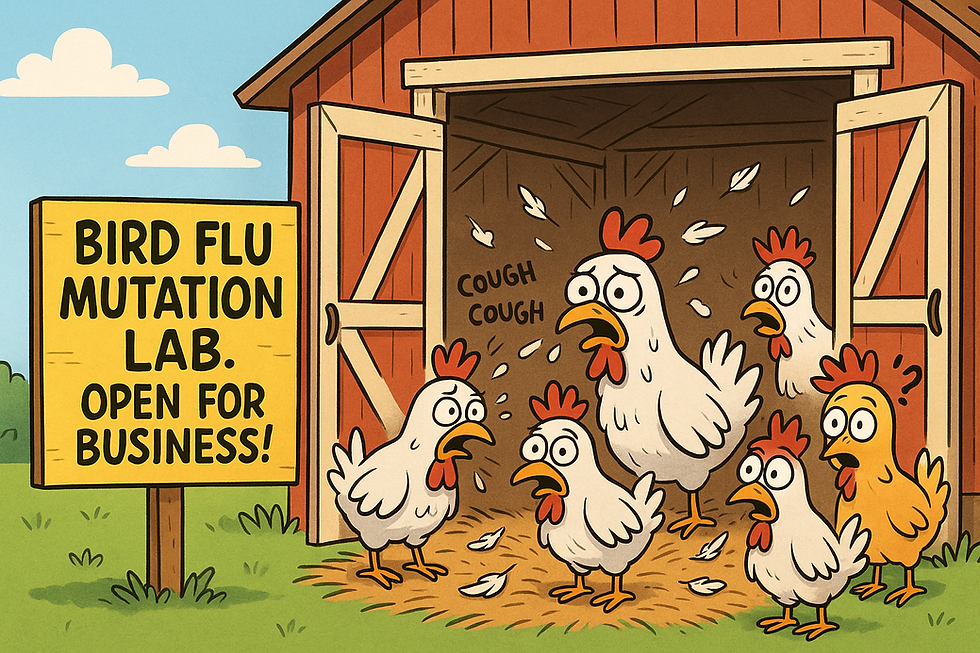Let it Rip: How Misguided Bird Flu Science Puts Us at Risk
- Leslie Phillips

- Jul 7
- 2 min read

Bottom Line Up Front
Poultry culling in the face of avian influenza involves the removal and euthanization of all birds in an infected flock. Current USDA and HHS leadership have proposed abandoning proactive poultry culling in favor of letting the current strain of bird flu, H5N1, spread through flocks to help farmers "identify the birds, and preserve the birds, that are immune" to H5N1. While superficially appealing, this strategy fundamentally misrepresents infectious disease dynamics, viral evolution, and poultry genetics.
The Mutation Risk
Proponents cite evolution to support natural immunity but ignore the critical point that widespread infection creates ideal conditions for viral mutation. Every new infection provides opportunities for viruses to evolve into more dangerous variants, including those capable of efficient human-to-human transmission. Current policy encourages rapid culling* of infected flocks to minimize spread, as H5N1 infections typically result in nearly complete mortality of poultry within days, sometimes hours, of symptom onset. Current culling protocols eliminate these viral replication opportunities, whereas a "Let it Rip" strategy would create hundreds of millions of additional mutation opportunities.
Human Health Implications
With H5N1 already detected in numerous mammalian species, the risk of variants enabling efficient human-to-human transmission is neither remote nor hypothetical. While only one human death has occurred in the U.S., for recognized human infections, the global mortality rate of H5N1 approaches 50% (1).
The Genetics Fallacy
Applying a natural immunity concept to commercial poultry also misunderstands poultry genetics. Modern chickens and turkeys have been selectively bred for productivity, rather than disease resistance. Even if some chickens survive an outbreak, their survival does not guarantee immunity against new variants, much like humans who experience one flu strain remain at risk of infection from future strains.
Beyond First Impressions
While the "let it spread" approach may initially sound logical, resting on concepts such as survival of the fittest and natural immunity, infectious disease researchers point to cascading consequences that aren't immediately obvious. These include uncontrolled viral replication, which produces environmental contamination; overwhelming biosecurity systems designed for containment rather than sustained exposure; and disrupting surveillance networks that link animal and human cases.
Just Cause it Sounds Good...
The idea of creating immunity sounds, well, not so crazy. Yet, examining this and other proposed health policies thoughtfully has the potential to identify unintended consequences. Asking questions and considering the many potential outcomes are critical components of public health policy.
++++++++++++++++++++++++++++++++++++++++++++
*Farmers who cull their flocks at the first sign of infection are compensated for their losses through federal indemnity programs.
1. Sorrell EM, Kromm M, Gronvall G, Pekosz A, Davis MF. The consequences of letting avian influenza run rampant in US poultry. Science. 2025 Jul 3;389(6647):27-29. doi: 10.1126/science.adx8639.
.
